
Chile’s Only Travel Guide You Need For A Great Trip in 11 Easy Steps
- Destinations Americas
Cruisit Team
- July 19, 2022
- 0
- 4801
- 77 minutes read
Chile’s Background
Since at least 3000 BC, Chile was populated by the native settlers until 1540. Northern Chile was under Inca control before the Spanish invasion in the 16th century, while Araucanian Indians occupied central and southern Chile; the latter were not totally subdued until the early 1880s. Although Chile proclaimed independence in 1810, it did not gain a decisive triumph over the Spanish until 1818.
Chile fought Peru and Bolivia in the Pacific War (1879-84), gaining control of its current northern lands. Much have happened in between the years, but we like to keep the historical parts short here in Cruisit, we know you get bored. Anyways, since the 1980s, sound economic policies have led to sustained growth and helped guarantee the country’s commitment to democratic and representative government. Chile has progressively adopted regional and international leadership positions that are proportional with its standing as a stable, democratic country.
The fastest growing economy in South America, and tourism growing yearly, Chile is a safe and great place to explore. Absurdly thin and ridiculously long, Chile stretches from South America’s belly to its foot, from the driest desert on the planet to enormous southern glacier regions. Over a 4300km span, many landscapes ranging from dry dunes, rich valleys, mountains, ancient forests, enormous glaciers, and fjords.
There’s awe in every aspect and nature on a grand scale. It’s overwhelming for tourists to discover this vast environment left in such pristine condition. Human growth may endanger these riches sooner than anticipated. For the time being, Chile protects some of our planet’s most untouched sites.
Tight borders with its neighbors makes it feel like Chile is in South America’s backyard, where the nation is squeezed between the Andes and the Pacific bordered by Peru, Bolivia, and Argentina, as if you’ve arrived at the continent’s sharp end of a blade. One thing that leaps out of this final frontier at the Chile’s apex is hospitality. A welcoming mood accompanies your stay in Chile, but in Patagonia, it feels like Argentina and Chile have mixed into one. Patagonians drink round after round of maté tea. The practice of talking and relaxing is so ingrained in the fabric of local life that it goes unnoticed. But they all agree on one thing: remain and relax your guard.
“Chile is nature on an elongated scale, literally, yet getting around the country is surprisingly simple if you don’t rush and take it slow, enjoying everything Chile has to offer from its vast array of wallpaper perfect lanscapes.“
Chile attracts visitors because of its natural landscape, which includes geysers, mountains, beaches, forests, and volcanoes, as well as chances for adventure sports. Trekking and hiking are at the forefront of outdoor activities in Chile due to the presence of national parks. Climbing, river rafting, mountain biking, and equestrian riding are all options for adventurous vacationers.
In Chile, adventure is defined as what occurs on the road. Pedal the Carretera Austral’s chunky gravel or take a wrong turn and you’ll discover bliss in a hidden ranch. There’s harmony in unplanned adventures while in Chile, and this coincidence always wins. Plans can be set, but try to remain open to new experiences as well. Locals don’t rush, therefore you shouldn’t either. ‘Those who rush lose their time,’ says a Patagonian proverb that may serve as a travel slogan.
Chile is a country where you’re never more than a stone’s throw from the mountains or the sea, and there’s an incredible variety of sites to trek, view wildlife, and drink up Chilean history and culture. This thin country is beautiful from head to toe; its rich culture and variety have flourished as a result of its isolation, making it an appealing vacation destination. Read ahead for our full guide of what makes Chile worth a visit.
This Chile ultimate travel guide promises a comprehensive introduction to Chile’s stunning landscapes, including the severely arid north of the Atacama Desert and the mountainous, glacier-riddled south of Patagonia. It’s an ambitious plan for a week, and you’ll be covering a lot of land, so prepare to rely on Chile’s network of low-cost airlines to get you around. Alternatively, leave out one or two places to free up time to go further into a few. If you’re still curious, let’s go through how to go to Chile, how to get there, how to move about Chile, the travel budget in Chile, and more.
- Visit the Atacama Desert.
- Go to Valparaíso, Chile’s vibrant harbor.
- The Lake District, with its snowcapped mountains, German influence, and immense lakes, is a must-see.
- Hike at Cerro Castillo National Park.
- Explore the breathtaking Torres del Paine National Park, which is home to an abundance of animals.
- Hike around Navarino Island.
- Easter Island’s Moai Statues are located in the midst of the Pacific Ocean.
- Visit Ahu Nau Nau, which has seven moai, some of which have topknots.
- Don’t miss Patagonia if you haven’t been there already on the other side, it is a spectacular location with warm hearted people.
- Chile is one of the safest countries on the planet. It is more expensive than its neighbors but it is also extremely rewarding.
- If you want to go on an adventure in Chile, you may need to train prior because moderate to high physical health is essential.
- The greatest time to visit Chile is not usually when you think. Distances in Chile are long, and Chileans speak a very peculiar Spanish. Border crossings to Argentina can be difficult in certain regions.
- Make sure you understand the visa and vaccination requirements for your trip to Chile.
- Chileans follow several odd social rules for those who aren’t acquainted with them, including standing closer to each other, not clicking or pointing fingers, not flicking your chin, or hitting your palm
- Make an effort to eat like a Chilean and sample their cuisine, it is rewarding.
- Get an international driver’s license to rent a car in Chile.
- You can drink tap water in Chile, however, you could still get a LifeStraw, or water bottles if you’re concerned.
- Most of Chileans are very helpful, welcoming, and warm, with hugs, kisses, and smiles being the norm. So for those coming from Scandinavia specifically, be warned.
- In the South of Chile, collectivos — shared taxis are abundant. They charge a fixed price as per the destination.
- Chilean people speak a difficult to grasp fast slang Spanish, so it might be good to brush up on your spanish, download offline translation to help you along the way.
- ATMs are dependable. Banco Estado is a government bank and has a lower fee than other banks
- Different accommodation options are available for backpackers up to luxury seekers.
Crime & Scams in Chile
Chile is economically and politically stable, with historically low crime rates in comparison to the rest of the area. Though Chile has the lowest homicide rate in the area, it nonetheless suffers from many of the crimes that plague other countries throughout the world, ranging from vandalism to petty crime. Overall, Chile is a fairly safe location for South American visitors, as well as lone female travelers who want to enjoy autonomous travel in Chile.
The neighborhoods in Santiago to avoid are Las Condes, Providencia, and Vitacura, which are frequently visited by thieves. Cerro San Cristobal, Cerro Manquehue, Cerro Santa Lucia, and the Lake District are all spots to avoid.
Be vigilant, particularly if you are in public places used by tourists, near official buildings, crowded attractions, or on public transportation. Avoid poor areas of the city. Take care on city streets, especially after dark or if you are on your own. Don’t carry large amounts of money or wear valuable watches or jewelry. Avoid using your mobile phone in the street.
Earthquakes are growing more common and more powerful in recent years. There are numerous active volcanoes that might erupt at any time, and the land is densely packed with geysers, which are some of the most amazing but also potentially dangerous natural wonders.
Healthcare in Chile While Traveling
Chile has one of the world’s finest national healthcare standards. They are seen as a Latin American leader, setting the bar for what other countries may achieve. Chilean citizens and legal residents enjoy free and subsidized access to public healthcare. As a visitor, you are unlikely to receive free medical treatment; but, private clinics and hospitals in Santiago are of great quality. Clinica Alemana and Clinica Las Condes are Santiago’s two largest private hospitals.
Before every trip, make sure you are up to date on all routine vaccinations. Among the key recommended vaccines globally are chickenpox (Varicella), diphtheria-tetanus-pertussis (DTP), influenza (flu), measles-mumps-rubella (MMR), polio, hepatitis, typhoid, and shingles. If you will be in contact with wildlife, you may want to consider getting a rabies vaccination.
When visiting Chile, you are legally required to purchase travel medical insurance. Failure to show coverage may result in being refused entry to the country. However, it is always important to have comprehensive medical coverage when traveling because you never know what you could encounter while overseas.
Only eat foods that are cooked and served hot, avoid food that has been sitting on a buffet, and eat raw fruits and vegetables only if you have washed them in clean water or peeled them.
Only drink beverages from factory-sealed containers, avoid ice because it may have been made from unclean water, and only drink pasteurized milk.
Wash your hands often with soap and water for 20 seconds, especially after using the bathroom and before eating. If soap and water aren’t available, use an alcohol-based hand sanitizer that contains at least 60% alcohol. Also, keep your hands away from your face and mouth
Chile is a country of diversity and contrasts. The Atacama Desert, the world’s harshest desert can be found in the north, while Patagonian Ice Field, the world’s third freshwater reserve can be found in the south. That is what makes Chile tough to understand when it comes to trip planning. Chile has largely dry summers and wet winters, which coincide with the seasons in North America, Europe, most of Asia, and the Middle East. Because Chile is in the southern hemisphere, like Australia and Indonesia, it is winter there while it is summer everywhere else.
Shoulder Season
The shoulder season in Chile runs from September to November and March to May. These seasons are ideal for visiting Santiago, but also for visiting the Lakes District, where spring flowers begin to blossom in October, providing breathtaking landscapes. In the south, March through April brings the brilliant hues of fall foliage, but in wine country, grape harvests and wine festivities take place. Crowds are thinned out in Patagonia, the weather is warming up, and accommodation costs are beginning to decline. September is an excellent time to visit Santiago, the central valleys, and the country’s north, including the Atacama Desert. If you plan on visiting Chile at this time, be sure to book well in advance to ensure you get the best rates and lodgings, since this is the second best time to visit.
High (Peak) Season
Chile’s high season and the busiest period that runs from December to February, and the country considers it to be Summer. Patagonia is at its finest during this time of year, and the beaches are crowded. Weather for outdoor adventures is best, and as such, Torres del Paine National Park fills up rapidly, and costs skyrocket. This is an excellent time to visit Santiago because many locals are leaving the city, cutting traffic and lodging expenses. Chileans enjoy taking vacations in December, thus coastal places such as Valparaiso can get congested. Prices for everything in Chile inflate during this time of year and availabilities run thin. We recommend making reservations well ahead for a stay there during this time.
Off-Season
The low season in Chile lasts from June to August and is ideal for visiting ski resorts due to heavy snowfall in the middle Andes and Lake District. This is also a great time to visit the north because the people have reduced. However, services in the Carretera Austral are restricted, especially since mountain passes may be blocked by winter. Patagonia’s tourist numbers are significantly lower, with many hotels closing for the season. However, for those who want to experience Torres del Paine at its most isolated, the park remains accessible and provides superb animal viewing opportunities, as does wildlife across the nation. Although this time of year in Chile is ideal for avoiding crowds, it might be difficult to locate lodging because many are closed for the season. It is worth mentioning that July is the most popular month during this time period because it is the high winter season in Chile.
By Plane
The primary air entry point is Santiago Arturo Merino Bentez International Airport, which is located 15 kilometers (9.5 miles) northwest of metropolitan Santiago. There are 57 airports worldwide with direct flights to Santiago de Chile, distributed among 56 locations in 19 countries. LATAM, Chile’s primary airline, links Europe and the United States to Chile. Jetsmart, Sky Airline, American Airlines, Iberia, Air Labrador, Aerolineas Argentinas, Qantas, Aeromexico, Gol, Avianca, and Air France are among the other airlines. Some of those companies provide year-round or seasonal flights, so make sure to check ahead of time to avoid disrupting your Chile trip plans.
If you plan on touring South America for an extended period of time, consider purchasing the Oneworld Visit South America Pass, which is valid in Argentina, Bolivia, Brazil, Colombia, Chile (excluding Easter Island), Ecuador, Paraguay, Peru, Uruguay, and Venezuela.
By Car
Chile has a border with Peru and Bolivia to the north, and Argentina to the east. There are more than 30 road border crossings with Argentina, albeit several are blocked during the winter months owing to snow (remember, the daunting Andes separate the two countries).
The Paso Internacional Los Libertadores, also known as Cristo Redentor, is a spectacular mountain pass in the Andes between Mendoza, Argentina and Santiago, Chile, reaching heights of 3,200m (10,500ft) and containing several hard switchbacks. The Pajaritos crossing (also known as Paso Cardenal Antonio Samoré) connects Villa La Angostura, Argentina, with Osorno, Chile.
Most crossing points are paved roads, but others are dirt roads, particularly in Chile’s deep south or in Atacama’s far north. Many are inaccessible by public transit and, in the winter, are closed owing to snow. It’s important to check with the local tourism office or gendarmeria (border police) office ahead of time to ensure that the crossing is open.
By Bus
Buses from Argentina, Bolivia, and Peru exist, but the journeys are frequently arduous, lasting more than 22 hours and up to 41 hours. Bus travel makes a lot of sense if you live in a city in a nearby country that is just next to the border and the journey time is less than 10 hours, making it a more manageable trip.
By Boat
Several coastal villages are becoming frequent destinations on cruise ship itineraries. Princess and Norwegian Cruise Line are two cruise lines that visit Chile. The most popular stop is Valparaiso. Cruce Andino operates ferries between Bariloche, Argentina, and Puerto Varas, Chile. While not a ferry, small boats may be leased by Juana de Arco from Lago Puelo, Argentina to make the water crossing, but they only drop people off at the Chilean border; most travelers continue on foot.
Traveling in Chile is simple, convenient, and economical when compared to Europe or North America. Most Chileans travel by bus, and it’s such a dependable and economical alternative that you’ll most likely do the same. Internal flights, on the other hand, are useful for traversing big distances quickly. The country boasts an excellent road system, and driving is a rapid and generally stress-free method to get about. Chile’s rail network has deteriorated, and just a few services are operational. Ferry services south of Puerto Montt give a leisurely but picturesque method to get as far as Puerto Natales.
By Plane
There are currently 17 domestic flights to Santiago de Chile. Chile is a country of nearly unbelievable distances (by car, it’s more than 5000km from Arica to Punta Arenas), therefore flying is by far the quickest and most convenient option to visit both its northern and southern areas in a single trip. Fares are relatively pricey, albeit there are occasional attractive specials. The leading airline is LAN, which, in addition to operating the most domestic flights, is Chile’s main long-haul carrier and the only one with flights to Easter Island.
By Taxi
Taxis are often painted black with a yellow roof. Foreigners are frequently overcharged, so make sure the meter is switched on before you begin your journey and acquire an estimate for the fee, if possible in Spanish. Fares should be shown on the windscreen.
By Car
While buses connect Chile’s towns and cities, most visitors come to see the country’s wilderness areas, which are frequently difficult, if not impossible, to reach by public transportation. Many isolated sights are visited by tour companies, but renting a car gives you greater liberty. You must be at least 21 years old and have a major credit card in order to leave a blank voucher as a guarantee. You may use your national driver’s license, but you are highly urged to bring an inter-national license as well. Carabineros (police officers) in Chile, who routinely stop cars to check their paperwork, are generally wary of strange foreign licenses and are always happy dealing with international ones. Except for highway speeding, traffic laws are rarely enforced. The speed limit is 50km/h or fewer in cities and 100km/h on highways, and radar speed traps are widespread. If an incoming vehicle flashes its headlights, it’s a warning that carabineros are nearby. If you are pulled over, show the utmost civility and patience, and do not do or say anything that may be regarded as bribery.
By Bus
Chile’s long-distance buses provide an exceptional service, significantly superior to those of their European or North American equivalents, owing mostly to ample legroom, frequent departures, and flexible itineraries. It’s usually a good idea to examine the tickets given by the many airlines servicing your location, since you’ll almost likely discover one providing a special bargain when you’re in the central terminal. The two major firms, Tur Bus and Pullman Bus, frequently have their own terminals. Some towns, however, do not have a central terminal, therefore buses depart from their respective company headquarters.
Local buses, sometimes known as micros, connect city centers to suburbs and adjacent towns. These buses are frequently overcrowded, making travel with a full bag problematic. The important points of the route and final destination are displayed on the inside of the front glass, however carrying a street map and being able to point to your target location is always helpful. Buses leaving the city for the countryside generally depart from their own rural terminal, which is usually adjacent to the Mercado Municipal (market building).
Colectivos, which are shared taxis that run along a predetermined route with fixed prices, are typically only slightly more expensive than local buses. Most colectivos resemble conventional taxis (except that they are completely black rather than black and yellow) and have their route or ultimate destination written on a board on the roof, but in certain places, colectivos are bright yellow automobiles with no roof-board.
By Boat
A network of ferries operates across the fjords, inlets, and channels in Chile’s deep south, providing a more picturesque and romantic alternative to airplanes and long-distance buses south of Puerto Montt, where the mainland breaks apart into an archipelago. Tourists particularly enjoy two ferries: one from Puerto Montt to Chacabuco and the San Raphael glacier, and another from Puerto Montt and Puerto Natales. There are also ferry connections between Quellón on Chiloé and Chaitén on the Carretera Austral, as well as a variety of shorter routes that create a bridge along various parts of the Carretera Austral. A ferry service connects Petrohué with Peulla, near the Argentine border, across Lago Todos Los Santos in the Lake District.
The routes are from Petrohué to Peulla, Puerto Montt to Chacabuco, Puerto Montt to Chacabuco then Laguna San Rafael, Puerto Montt to Chaitén, Puerto Montt to Puerto Natales, Quellón to Chaitén (Jan and Feb)
By Metro
Santiago, Chile’s capital, features a quick and sophisticated metro system. While this is a convenient method to move around the city, it is more expensive than using the bus. A single trip ticket ranges in price from 520 to 620 Chilean Pesos, depending on whether you travel during peak or off-peak hours. Nonetheless, this is quite inexpensive in comparison to many European and North American nations.
SIM Cards & Calls in Chile
A Chilean SIM card can be purchased for as little as 500 CLP (0.60 USD) and as much as 5000 CLP (6 USD) in Entel, Movistar, Claro, and WOM stores (though these generally only deal with postpaid clients), as well as supermarkets and grocery stores. SIM cards are also available at Santiago-Arturo Merino Bentez International Airport. Expect to spend as little as 1000 CLP for 1 GB of data valid for 3 days with practically all Chilean mobile providers, with a mid-range bundle costing 5000 CLP for 6 GB good for 30 days.
Alternatively, you may also get a prepaid eSim card from a company like Airalo, SIMCorner, HolaFly or Nomad. All the providers offer data-only plans that may be used with an eSim-enabled phone, so make sure your phone is compatible. It is also possible to sign up for a Solis WiFi Hotspot. Check before you travel because they only serve select areas. Airalo provides the most extensive coverage of over 180 nations.
Local Internet & WiFi in Chile
Chile has the greatest computer and internet penetration in Latin America, with about 90 percent of Chileans using the internet in some capacity. Speeds have greatly increased, with the average being approximately 15 Mbps, while there are some that reach 200+ Mbps. The average mobile internet speed is roughly 22 Mbps. Most hotels, hostels, and other lodgings will provide free internet as part of your stay.
Top Places in Chile
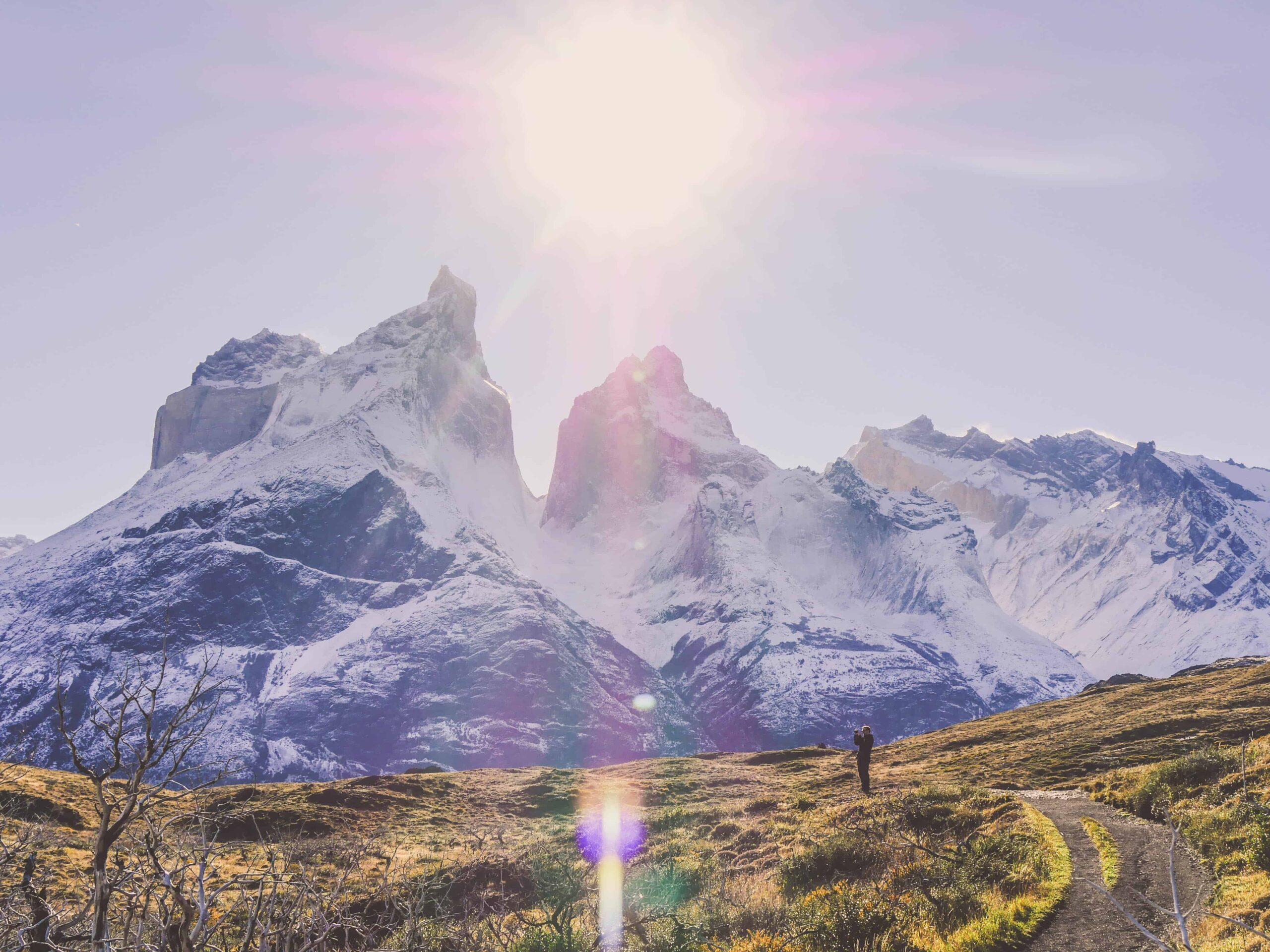
Parque Nacional Torres del Paine
The granite pillars of Torres del Paine overpower the scenery of what may be South America’s best national park, soaring nearly vertically more than 2000m above the Patagonian plains. The park was part of a huge sheep estancia before its formation in 1959, and it is currently recovering after over a century of overexploitation of its meadows, woodlands, and animals.
Parque Nacional Patagonia
The 690-square-kilometer Parque Nacional Patagonia, known as the Serengeti of the Southern Cone, is home to Patagonian grassland, forests, mountains, lakes, and lagoons. This new national park, located 18 kilometers north of Cochrane, was once an overgrazed estancia. Tompkins Conservation started restoring it in 2004. Flamingo, guanaco, huemul (endangered Andean deer), puma, viscacha, and fox now call it home. The park extends from the Ro Baker to the Argentine border, which can be reached by private car at Paso Roballos.


Rano Raraku
The volcano of Rano Raraku, about 18 kilometers from Hanga Roa, is known as ‘the nursery,’ because it is the quarry for the hard tuff from which the moai were carved. You’ll feel as if you’ve stepped back in time, strolling amid hundreds of moai in various states of completion scattered on the volcano’s southern slopes. The 360-degree view from the summit is simply breathtaking. A tiny, gleaming lake and roughly 20 standing moai may be seen within the crater.
Lake District
Chile’s Lake District (Zona Sur) is among the country’s most picturesque landscapes, covering more than 330 kilometers from Temuco to Puerto Montt. Zona Sur, like its alpine twin, has fertile agriculture at the base of its many snowcapped volcanoes and lush woods surrounded by thick forests. Farmers from Austria, Switzerland, and Germany moved in after the forcible displacement of the region’s indigenous inhabitants, the Mapuche, bringing with them elements from their own culture which is seen in the buildings of cities like Osorno and Valdivia.


Anakena
Beachgoers looking for a spot to relax will appreciate this postcard-perfect white-sand beach. It also serves as a wonderful backdrop for Ahu Nau Nau, a group of seven moai, some of whom have topknots. Ahu Ature Huki and its lone moai stand on a rise south of the beach, re-erected in 1956 by Norwegian adventurer Thor Heyerdahl with the assistance of a dozen islanders.
8-day Itinerary in Chile
Day 1
Arrive in Santiago
Arrive in Santiago’s Arturo Merino Bentez Airport to begin your Chilean trip. Airport shuttle services from the arrivals hall bring you into Santiago’s busy yet exciting modern metropolis. The Chilean capital is a city of five-lane expressways and high-rise buildings controlled by flashy multinational firms. But, if you look a bit deeper under this modern facade, you’ll discover a city rich in history, plenty of parks, and vibrant districts brimming with interesting restaurants and pubs.
The Plaza de Armas, Santiago’s massive main square, is your first destination. From a crowd of people to shoe shiners and dogs roaming freely amid the towering palms, it’s a swarm of activity. The Museo Chileno de Arte Precolombino (Chilean Museum of Pre-Columbian Art) lies nearby and has a plethora of Indigenous items, including burial figures used by the Mapuche people.


Afternoon stroll through the fashionable Lastarria neighborhood before climbing the meandering paved roads to the bench-fringed summit of green Cerro Santa Luca. This circular hill rising from the city center provides some of the best views of Santiago. Bring a camera to photograph a skyline of rooftops set against the dizzying background of the snowy Andes Mountains.
Book a table for your dinner at Peumayen to experience mystifying delicacies from Chile’s indigenous people for the last taste of Santiago’s distinct culture.

- Backpacker:
- Budget:
- Mid-range:
- Luxury:
When it becomes dark, a foreign city may be twice as dangerous - especially if you don't understand the language and are unfamiliar with the area. There is reason to be alarmed about walking home alone in the dark - there is moderate crime recorded in Santiago to warrant a tiny bit of worry. So always take taxis at night and never leave crowded areas to unlit alleys or streets.
This section will be added shortly. Refer to the transportation block in the top section.
Day 2
Head to Valparaíso
A two-hour bus ride west of Santiago is the crumbling seaside city of Valparaso, which is the opposite of Santiago’s metropolitan sophistication. This colorful bohemian city that was once one of the world’s most significant maritime ports is characterized by opulent late-nineteenth-century European architecture and creaky funiculars that moan their way up into the city’s 42 or so hills.
Valparaso may have lost its wealth, but it will never lose its spirit. The globally known graffiti artists who have left their imprint in Cerro Alegre and Cerro Concepción have made their stamp on most of the important tourist neighborhoods. It’s advisable to take a tour to fully appreciate the rich history of these sites.


Pablo Neruda, Chile’s beloved poet and Nobel Prize winner, is another artist who fell in love with the city. His Valparaso house, La Sebastiana, is a place to dig into his love of whimsy and childlike décor—as well as admiring some of the best views of the city and harbor from his living room. Consider getting the free audio guide to understand the history of the place.
For lunch, relax on the shaded patio of Restaurant El Peral, where razor clams and fresh seafood provide a taste of classic coastal Chilean cuisine direct from the boat.
Return to Santiago for the night and have a dinner at an Argentine steakhouse.

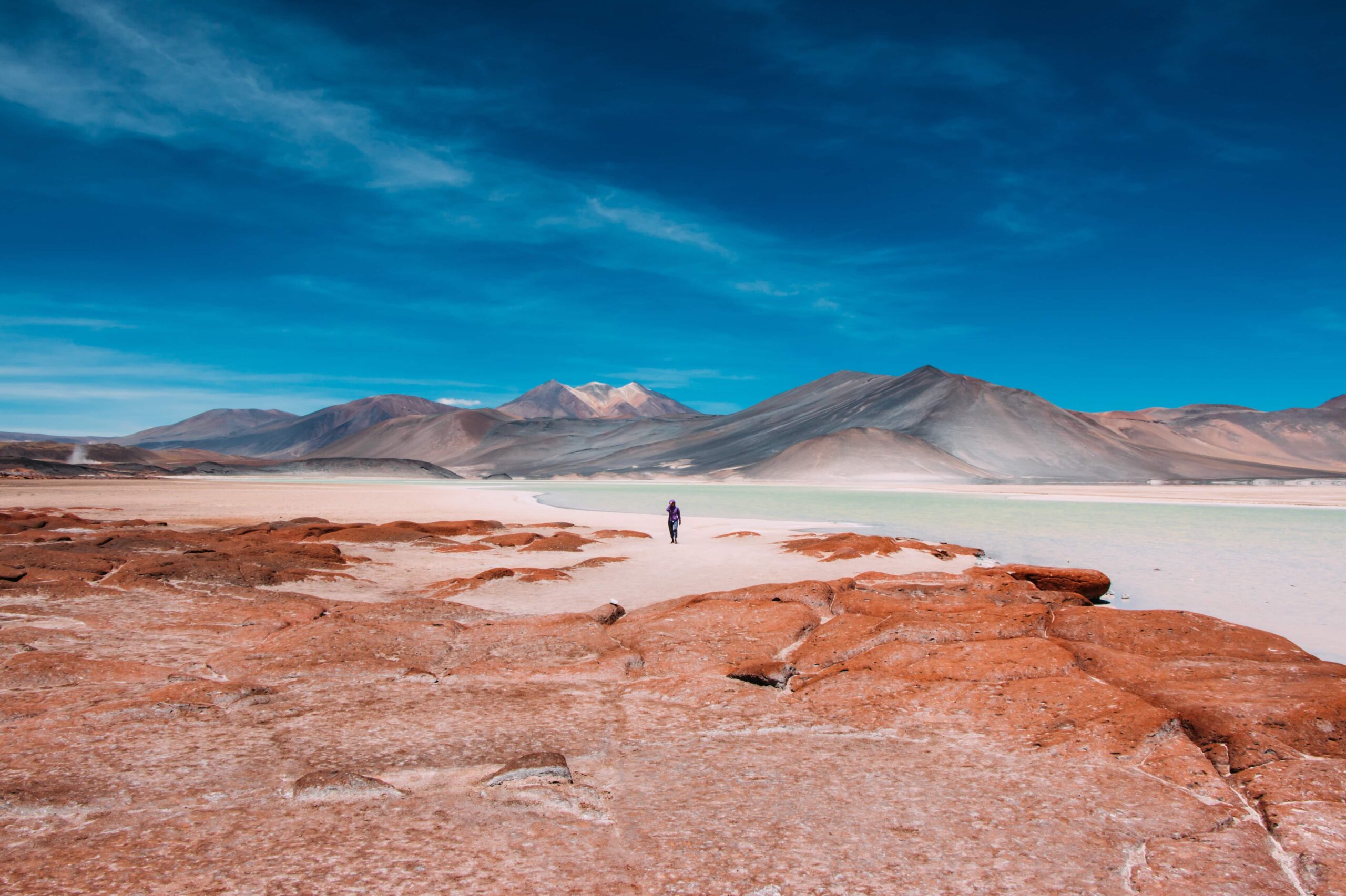

Day 3
Off to the Harsh Atacama Desert
An early two-hour flight north to Calama Airport, followed by an easy airport shuttle, gets you to San Pedro de Atacama, the northern adventure capital.
Drop your stuff to your hotel and apply sunscreen: Take precautions at 2,433 meters (7,982 feet) above sea level. The altitude may be brutal, so spend your afternoon acclimating carefully. Spend an hour or two visiting the Museo del Meteorito (Meteorite Museum), which houses over 3,200 meteorites that have landed in the neighboring desert, some of which are 4.5 million years old.
If you want to see the sunset as it fades behind the wind-buffeted sand dunes of the Valle de La Luna (Moon Valley), either rent a bike from a shop along Toconao road and cycle the 45 minutes, or arrange a horseback riding excursion with Atacama Horse Adventure if you’re feeling less active. Bring lots of water for the dry desert air, as well as warm clothing; as the sun goes down, the air soon becomes chilly.
- Backpacker:
- Budget:
- Mid-range:
- Luxury:
When it becomes dark, a foreign city may be twice as dangerous - especially if you don't understand the language and are unfamiliar with the area. There is reason to be alarmed about walking home alone in the dark - low crime is recorded in the Atacama to warrant any worry. But, always remain vigilant at night and never leave crowded areas to unlit alleys or streets.
This section will be added shortly. Refer to the transportation block in the top section.
Day 4
Day Trips in the Atacama
An early start (about 4 a.m.) is required for a journey up into the mountains that ring San Pedro de Atacama. The Géiseres del Tatio (Tatio Geysers), the world’s tallest and third biggest geyser field, will greet you as the sky begins to bleed with the morning. You may be battling for air at 4,320 meters (14,173 feet) above sea level, so take things slowly as you watch jets of steam erupting from the earth’s surface. Pack a swimsuit for a morning soak in the blissfully hot Puritama hot springs, a sequence of eight crystal-clear pools fed by geothermal water on the way back.
Take an afternoon snooze at your accommodation before taking a tour to Laguna Chaxa, a saline lake bordered by the gray-white salt plains of the Salar de Atacama. You have a decent chance of seeing Andean, James’, and Chilean flamingos, which flock here to feast on the algae-rich waters. You’ll be taken across to Laguna Tebinquinche just before sunset for a pisco sour and a magnificent show as the light sinks under the surrounding wall of volcanoes, turning the lake pink.


Eat a llama burger and wash it down with a drink. Wrap up up for a stargazing trip with local specialists, who can take you out into the desert to study the night skies using their 15 professional telescopes; the Atacama Desert is one of the world’s greatest areas for astronomy, with more than 300 clear evenings each year. SPACE is a well known local tour operators that will make much of your journey enjoyable.
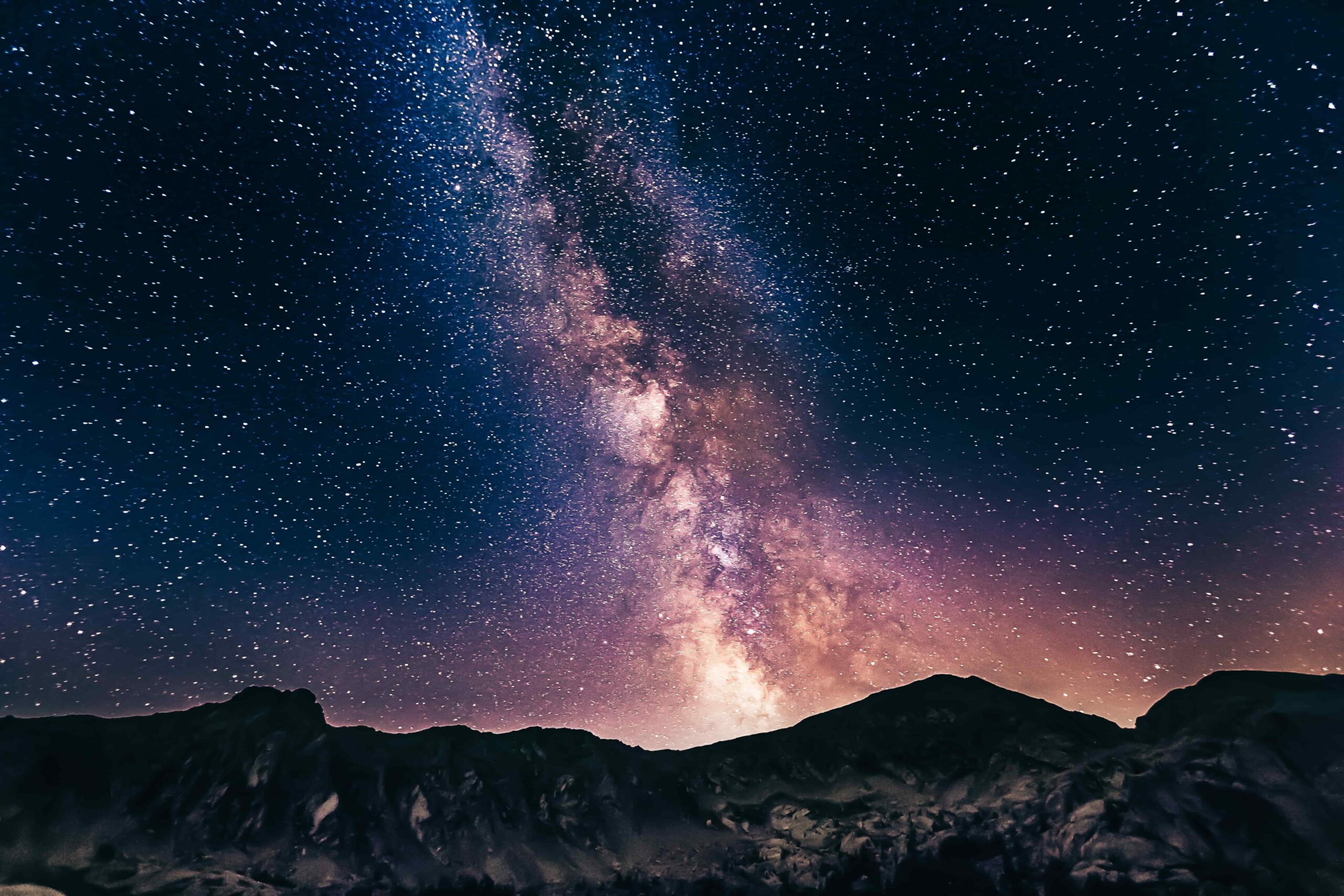
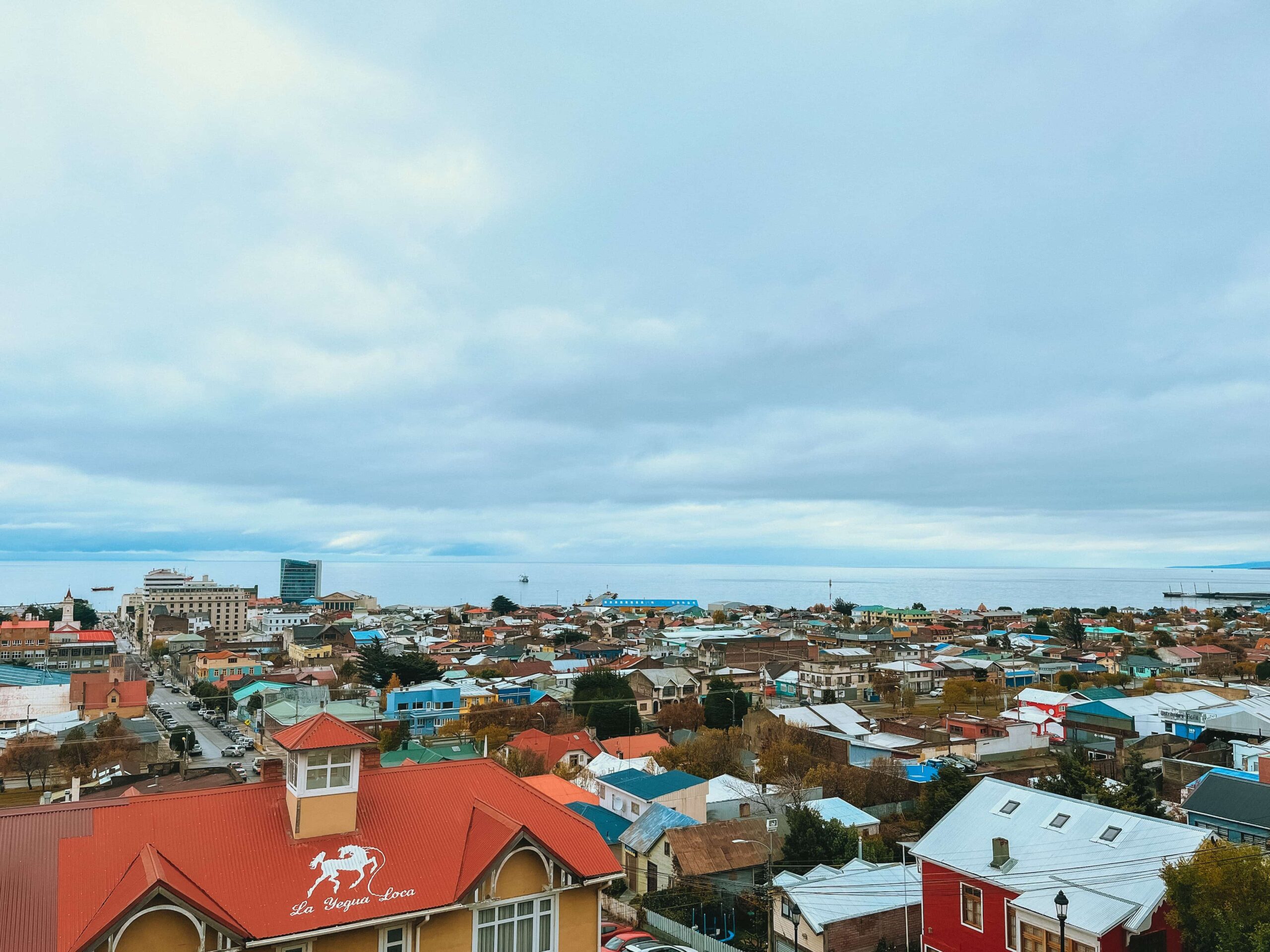

Day 5
Head to Punta Arenas
Another early morning as you return to Calama Airport for a five-hour trip to Punta Arenas, with a stopover in Santiago. This wind-battered village stands on the northern edge of the Magellan Strait, where eagle-eyed visitors may spot squat-nosed Chilean dolphins playing in the seas if they take a stroll down the coastal road.
Between November and March, take an afternoon speedboat cruise with Fiordos del Sur out to Magdalena Island, a 97-hectare reserve with around 120,000 resident Magellanic penguins in that period. Pathways that allow you to travel amongst the nests allow you to get up up and personal with this chattering mass of birds and their newly fledged youngsters.
In the evening, La Yegua Loca offers a local delicacy—king crab—as well as beautiful bayside vistas. After that, you’ll take a three-hour bus journey over the plains to Puerto Natales.
Day 6
Puerto Natales
Puerto Natales, a rustic village bordering the depressingly named—yet enchantingly picturesque.
To learn about the Patagonian pursuit of sheep ranching, take a one-day tour of Estancia La Pennsula’s 19,000-hectare family property. You’ll spend the morning riding a criollo horse around the fjords before seeing sheep shearing and devouring the ultimate Patagonian lunch: spit-roasted lamb. If you choose, you can skip this day and add it in Santiago or any of the other destinations in Chile. If you choose to do so, then you will have to find a stay in Torres del Paine since its 6 hours away from Punta Arenas.

- Backpacker:
- Budget:
- Mid-range:
- Luxury:
When it becomes dark, a foreign city may be twice as dangerous - especially if you don't understand the language and are unfamiliar with the area. There is little reason to be alarmed about walking home alone in the dark - there is less crime recorded in Puerto Natales but it's best to remain vigilant and take precautions. So always take taxis at night and never leave crowded areas to unlit alleys or streets.
This section will be added shortly. Refer to the transportation block in the top section.
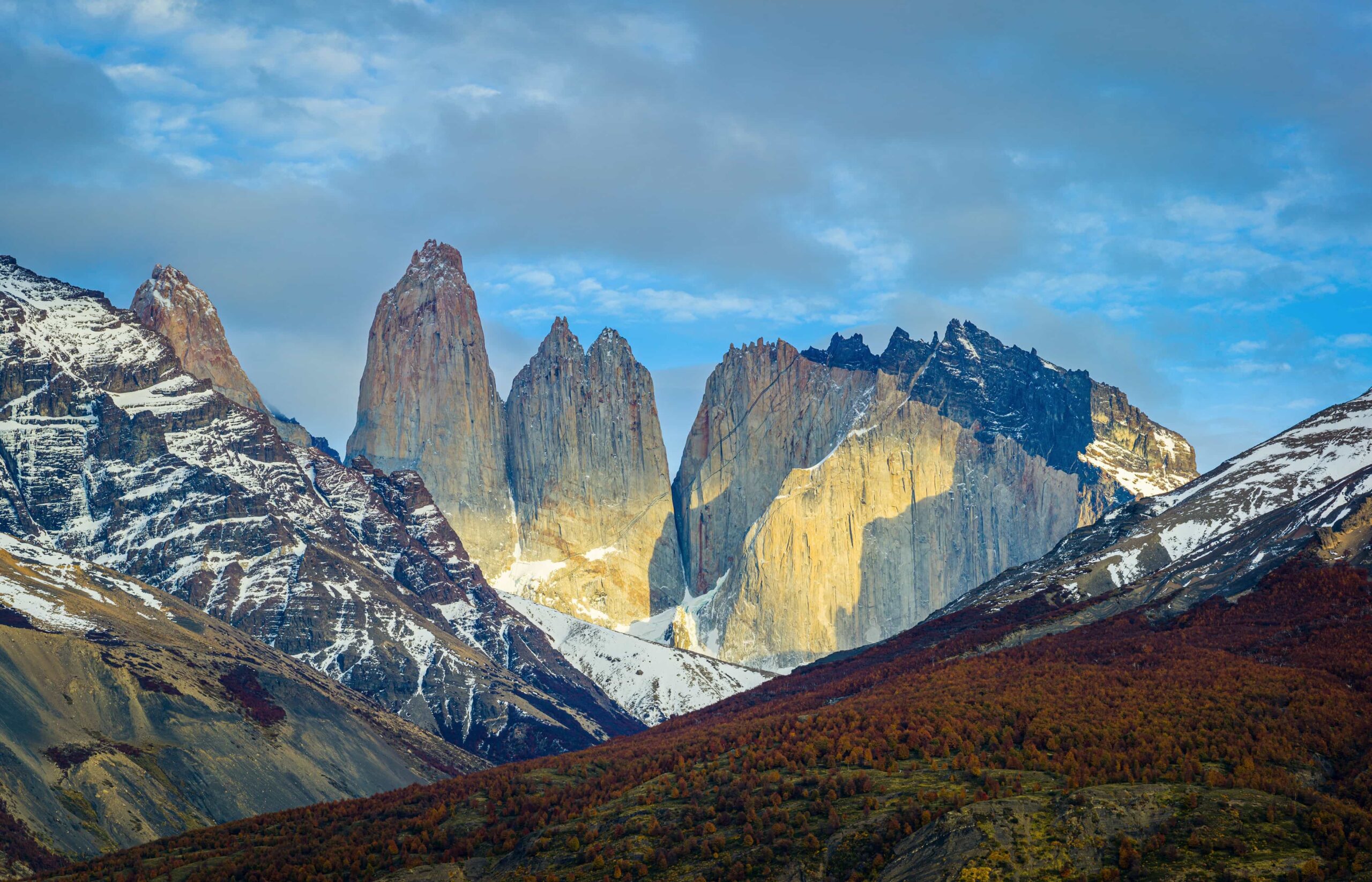

Day 7
Day Trip – Hike Torres del Paine
Your last day begins on the fringes of Torres del Paine, Chile’s most famous national park. It is revered for its three spire-like granite peaks that rise out of a landscape filled with crystal lakes and roaring glaciers. It is a two-hour trip from Puerto Natales and is best explored with a rental car.
The major draw is the eight-hour climb up to the three towers, but you can change things up by going ice trekking on Grey, the park’s 3.7-mile-wide glacier, or paddling out to its snout across the glacier’s eponymous lake for a whole different perspective.
Finish the day at Puerto Natales before flying back to Santiago. You might even extend your trip to explore Argentina’s Patagonia, which is only across the border.
Day 8
Adios Chile
After a lovely week in Chile, it’s time to say goodbye. You can take a flight from The Punta Arenas airport to whichever location you’re going to next or head back to Santiago where all the international flights come and go. Prices may vary greatly if you choose to go back to the capital where costs can be much lower.

The Most Popular Food in Chile
Chilean cuisine is highly diversified, primarily influenced by traditional Spanish cuisine, Chilean Mapuche culture, and local products, with subsequent significant influences from other European cuisines, most notably Germany, the United Kingdom, and France. Potatoes, rice, pork, and bread are the mainstays. In the centre of the nation, there are also lots of veggie selections. The coastline is rich in seafood, and you may sample various regional delicacies like as salmon, scallops, and sea bass.
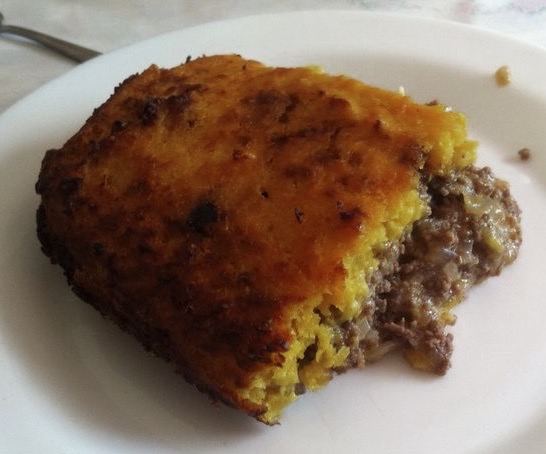
Pastel de Choclo
This is a classic clay pot that has been patiently roasted in the oven. Most people sprinkle sugar on top to give it a crust, and serve it with a fresh tomato salad as a side dish – and a bottle of Chilean red wine, such as a Carménère. This is a hearty dish that will keep you warm. Unfortunately, choclo is only available during the summer.

Lomo a lo Pobre
This classic dish consists of a beef steak topped with an egg and served with fried potatoes and onions. It’s usually seen at Chile’s most upscale restaurants.

Porotos Granados
Porotos granados, another traditional home-cooked food, is a stew of white beans, maize, and squash with onion, garlic, and merkén. It is a dish from the indigenous Mapuche people that has become a fundamental element of Chilean food, similar to curanto and charquican (more on this later). Porotos granados is a filling stew cooked with fresh beans, squash, corn, onion, and basil. It occasionally incorporates pumpkin or cranberries, and its roots may be traced back to ancient times.
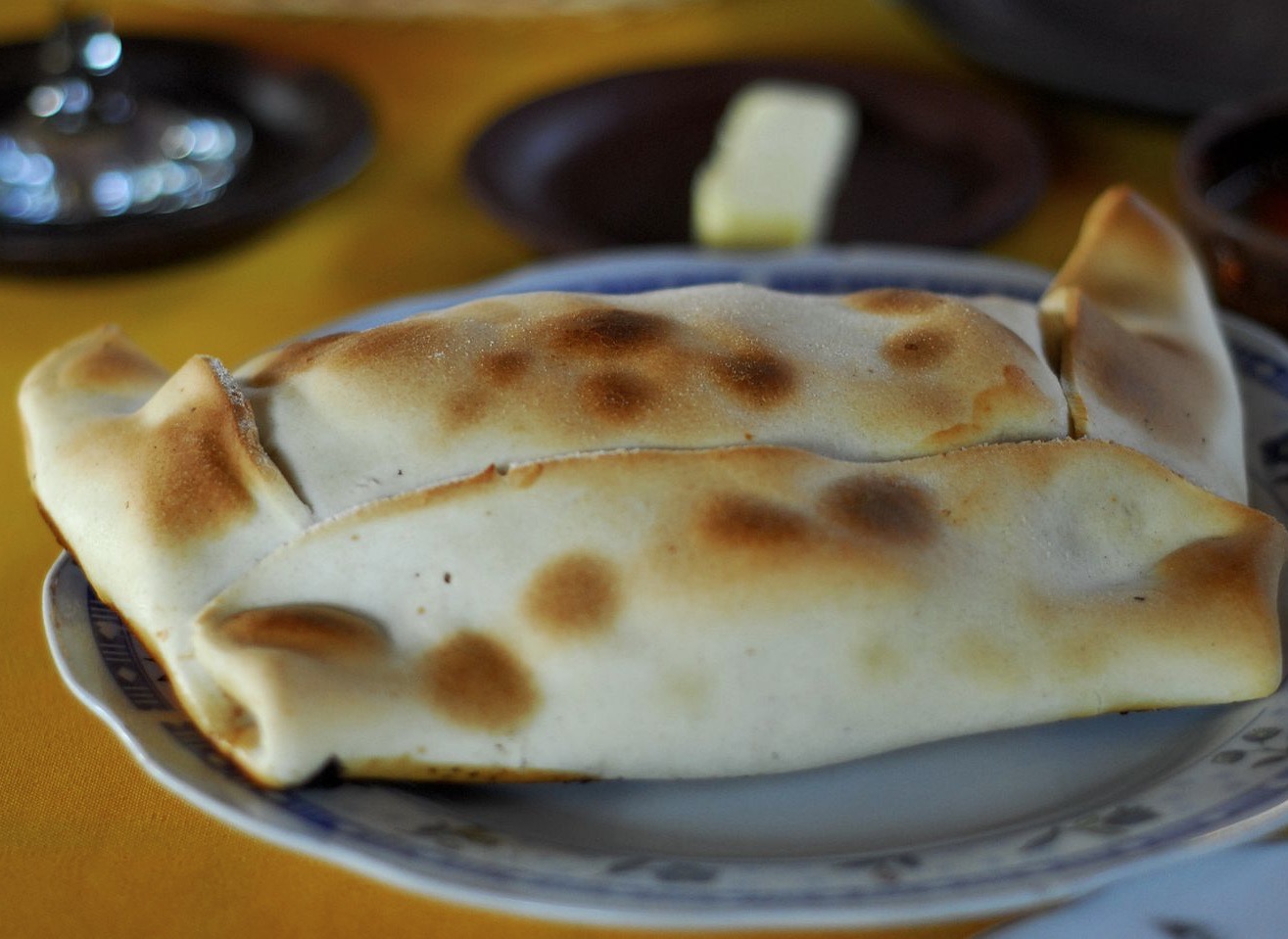
Empanada de Pino
Chile’s preferred street dish. While empanadas (a pastry loaded with a variety of fillings) are available in numerous South American nations, the recipes vary. Chile’s specialty is the empanada de pino (which, by the way, has nothing to do with a pine tree!). The pino is the empanada filling, which consists of ground beef and sautéed onions, a pair of olives, and a quarter hard-boiled egg. When baked in the oven, it resembles a miniature version of the Italian calzone.
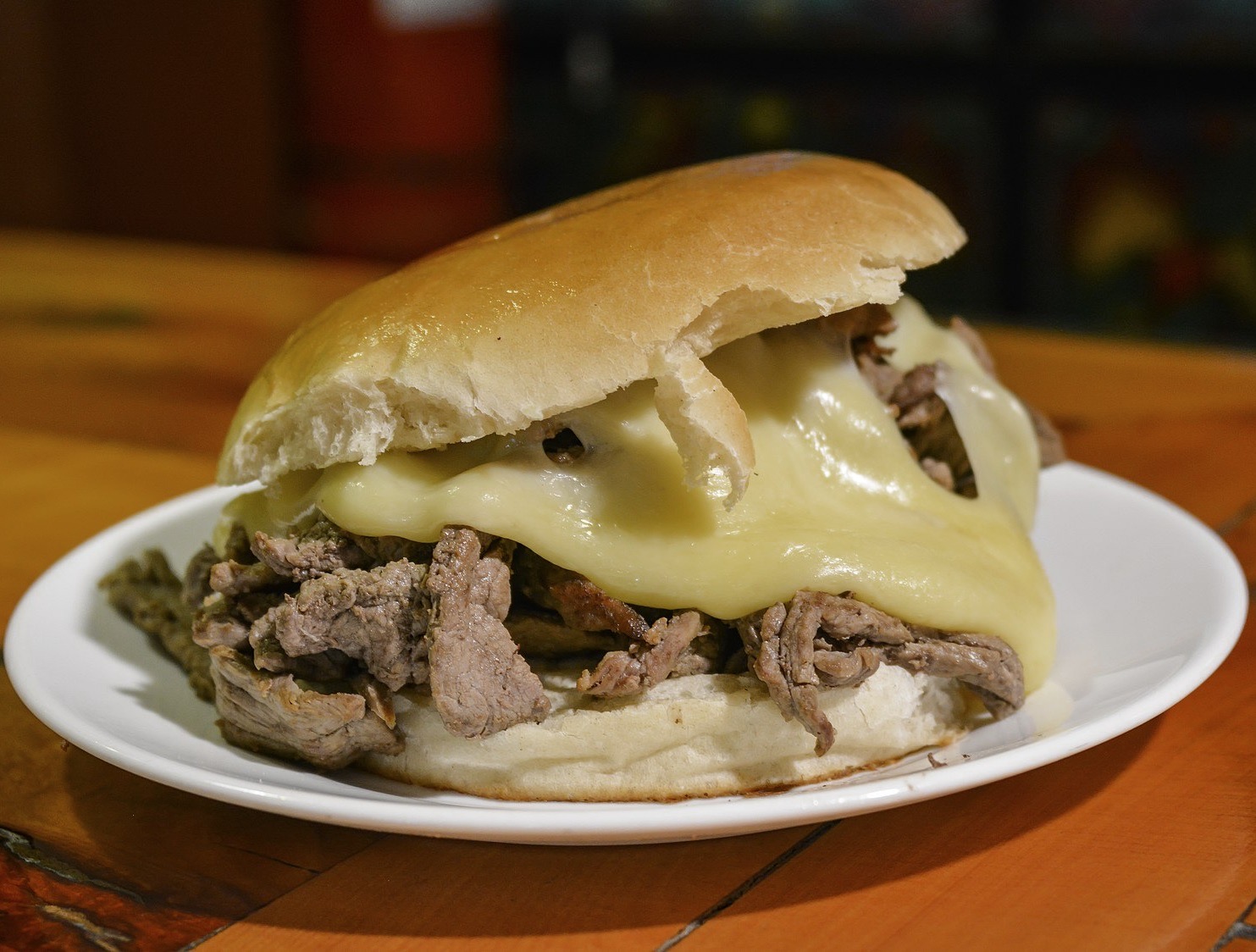
Barros Luco
Chileans, like to eat their late president, not literally of course. Barros Luco consists of small pieces of grilled beef steak covered with cheese and served within a bun or fresh bread roll, similar to an American cheeseburger. It was named after former Chilean president Ramón Barros Luco, who enjoyed this particular sandwich in the 19th century, and it stuck with the people.
What's the Travel Budget for Chile?
Flights
- Flights start at roughly $155 from nearby countries. Tickets however on average cost around $500 and can cost way more depending on which class and from which country you depart from.
Accommodation
- Nomad Backpacking style travelers can expect to spend around $250 for a week
- Budget travelers can expect to spend around $390 for a week
- Mid-range travelers can expect to spend around $650 for a week
- Luxury travelers can expect to spend around $1,150 for a week
Food Budget (Three meals and drinks)
- Nomad Backpacking style travelers can expect to spend around $15 per person per day
- Budget travelers can expect to pay around $25 per person per day
- Mid-range travelers on average would cost $30 to $40 per person per day
- Luxury travelers can expect to pay around $50 to $80 per person per day
Overall Budget Styles (Not including Flights, Tours, Transportation, or Car Rental)
- Nomad Backpacking style travelers can expect to spend roughly $250 for a week
- Budget travelers can expect to spend close to $420 for one person for a week
- Mid-range travelers can expect to spend approximately $710 for one person for a week
- Luxury travelers can expect to spend around $1,750 for one person for a week
Flights
- Flights start at roughly $155 from nearby countries. Tickets however on average cost around $500 and can cost way more depending on which class and from which country you depart from.
Accommodation
- Nomad Backpacking style travelers can expect to spend around $250 for a week
- Budget travelers can expect to spend around $390 for a week
- Mid-range travelers can expect to spend around $650 for a week
- Luxury travelers can expect to spend around $1,150 for a week
Food Budget (Three meals and drinks)
- Nomad Backpacking style travelers can expect to spend around $15 per person per day
- Budget travelers can expect to pay around $25 per person per day
- Mid-range travelers on average would cost $30 to $40 per person per day
- Luxury travelers can expect to pay around $50 to $80 per person per day
Overall Budget Styles (Not including Flights, Tours, Transportation, or Car Rental)
- Nomad Backpacking style travelers can expect to spend roughly $250 for a week
- Budget travelers can expect to spend close to $420 for one person for a week
- Mid-range travelers can expect to spend approximately $710 for one person for a week
- Luxury travelers can expect to spend around $1,750 for one person for a week
Flights
- Flights start at roughly $155 from nearby countries. Tickets however on average cost around $500 and can cost way more depending on which class and from which country you depart from.
Accommodation
- Nomad Backpacking style travelers can expect to spend around $250 for a week
- Budget travelers can expect to spend around $390 for a week
- Mid-range travelers can expect to spend around $650 for a week
- Luxury travelers can expect to spend around $1,150 for a week
Food Budget (Three meals and drinks)
- Nomad Backpacking style travelers can expect to spend around $15 per person per day
- Budget travelers can expect to pay around $25 per person per day
- Mid-range travelers on average would cost $30 to $40 per person per day
- Luxury travelers can expect to pay around $50 to $80 per person per day
Overall Budget Styles (Not including Flights, Tours, Transportation, or Car Rental)
- Nomad Backpacking style travelers can expect to spend roughly $250 for a week
- Budget travelers can expect to spend close to $420 for one person for a week
- Mid-range travelers can expect to spend approximately $710 for one person for a week
- Luxury travelers can expect to spend around $1,750 for one person for a week
Flights
- Flights start at roughly $155 from nearby countries. Tickets however on average cost around $500 and can cost way more depending on which class and from which country you depart from.
Accommodation
- Nomad Backpacking style travelers can expect to spend around $250 for a week
- Budget travelers can expect to spend around $390 for a week
- Mid-range travelers can expect to spend around $650 for a week
- Luxury travelers can expect to spend around $1,150 for a week
Food Budget (Three meals and drinks)
- Nomad Backpacking style travelers can expect to spend around $15 per person per day
- Budget travelers can expect to pay around $25 per person per day
- Mid-range travelers on average would cost $30 to $40 per person per day
- Luxury travelers can expect to pay around $50 to $80 per person per day
Overall Budget Styles (Not including Flights, Tours, Transportation, or Car Rental)
- Nomad Backpacking style travelers can expect to spend roughly $250 for a week
- Budget travelers can expect to spend close to $420 for one person for a week
- Mid-range travelers can expect to spend approximately $710 for one person for a week
- Luxury travelers can expect to spend around $1,750 for one person for a week
If you want to know what to pack, read this list below:
- This is a casual country with climate diversity from hot to cold from one place to another, dress accordingly
- Raincoat or Light Waterproof Jacket
- Hiking Boots or Sturdy Sneakers (Shoes You Don’t Mind Getting Wet)
- Sunscreen
- Insect Protection – Repellent and Clothing
- Sunglasses and Sun Hat
- Water Shoes
- Beach Towels/Sarong
- Dry Bag
- Money Belt or Cross Bag
- Portable Medical Kit
- Flashlight or Headlamp
- Copies of your passport.
- Get all the needed vaccinations before traveling
- A power bank is a must in any travel.
- Always have some cash with you just in case there are no ATMs and if you are dealing with a business that solely accepts cash
- Get yourself an adapter for your gadgets
- 1 toothbrush
- 1 tube of toothpaste
- 1 razor
- 1 package of dental floss
- 1 small bottle of shampoo
- 1 small bottle of shower gel
- 1 towel
- Deodorant
- Band-Aids
- Hydrocortisone cream
- Antibacterial cream
- Earplugs
- Tylenol
- Hand sanitizer (germs = sick = bad holiday)
- A key or combination lock
- Zip-lock bags
- Plastic bags (great for laundry)
- Universal charger/adaptor
- LifeStraw (A water bottle with a purifier)
- 1 dry shampoo spray & talc powder
- 1 hairbrush
- Makeup you use
- Hairbands & hair clips
- Feminine hygiene products
Clothing For Boys
- 1 pair of jeans or khaki pants
- 1 pair of shorts
- 1 bathing suit
- 5 T-shirts
- 1 long-sleeved T-shirt
- 1 pair of flip-flops
- 1 pair of sneakers
- 6 pairs of socks
- 5 pairs of boxer shorts
Clothing For Girls
- 1 swimsuit
- 1 sarong
- 1 pair of stretchy jeans
- 1 pair of leggings
- 2-3 long-sleeve tops
- 2-3 T-shirts
- 3-4 spaghetti tops
- 1 light cardigan
Want to plan your own trip, here are some of the best resources that can help you
- Skyscanner – They search small websites and budget airlines that larger search sites tend to miss. They are hands down the number one place to start.
- Momondo – This is another favorite flight search engine because they search such a wide variety of sites and airlines. Always check here too.
- Booking.com – The best all-around booking site that constantly provides the most affordable and lowest rates. They have the widest selection of budget accommodation.
- Couchsurfing – This website allows you to stay on people’s couches or spare rooms for free. It’s a great way to save money while meeting locals who can tell you the ins and outs of their city. The site also lists events you can attend to meet people (even if you’re not staying with someone).
- Intrepid Travel – If you want to do group tours, go with Intrepid. They offer good small group tours that use local operators and leave a small environmental footprint.
- Grassroots Volunteering – For volunteering, Grassroots Volunteering compiles a list of good local volunteer organizations that keep the money within the community.
- Get Your Guide – Get Your Guide is a huge online marketplace for tours and excursions. They have tons of tour options available in cities all around the world, including everything from cooking classes, walking tours, street art lessons, and more! It has the world’s largest collection of things to do with more than 30,000 activities in 7500 destinations.
- SafetyWing – Safety Wing offers convenient and affordable plans tailored to digital nomads and long-term travelers. They have cheap monthly plans, great customer service, and an easy-to-use claims process that makes it perfect for those on the road.
- Trip Advisor: Check the reviews and then book your accommodation. TripAdvisor is where you go when you want to compare prices with multiple accommodation providers.
- VRBO: is the main search engine to use when you are looking for a home or apartment rental. It can sometimes be cheaper than hotels and it is the best way to stay in areas that offer a more local feel.
- Hostelworld: With one of the largest databases of hostels in the world, Hostelworld is the go-to site when you are looking for budget accommodation.
- Rome 2 Rio: If you want to see how to get somewhere by plane, train, bus, ferry, or car Rome2Rio lays it all out for you as well as related costs.
- World Nomads Insurance: When traveling you should always have travel insurance. We have found the best bang for your buck is by far World Nomads.
Final Thoughts on Chile
Chile has a sophisticated and rich heritage that can be seen across the nation dating back to 3,000 BC, with its old constructions left by its various aboriginal people, colonial history, spectacular and distinct landmarks, amazing hospitality, thrilling festivals and dances, and a breathtaking picture perfect environment. A terrific choice for anybody looking for a perfect place to visit in South America. Chile is stunningly lovely, with magnificent national treasures, fauna, and breathtaking landscape. Would you travel to Chile?
Have you ever visited Chile? Please leave your opinions in the space below.